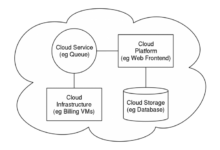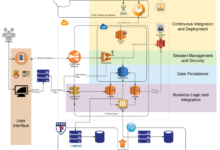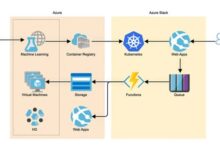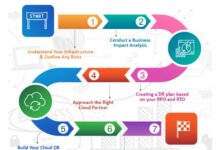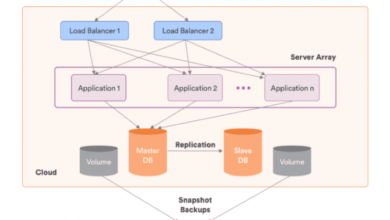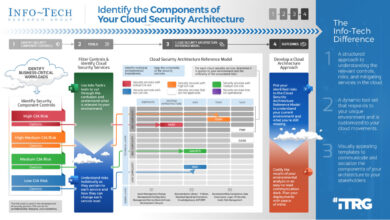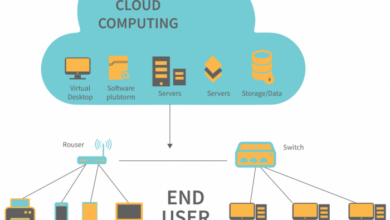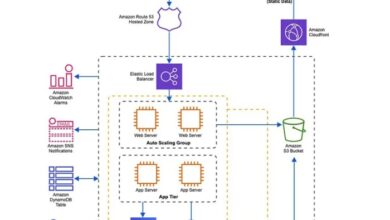Delving into the Flexibility-Enhancing Role of Cloud Architecture Diagrams
In today’s dynamic IT landscape, flexibility is paramount. Cloud architecture diagrams emerge as invaluable tools in visualizing and comprehending the intricate world of cloud environments. These diagrams not only provide a clear roadmap for architects, engineers, and business leaders but also play a pivotal role in enabling flexibility and agility.
Cloud architecture diagrams serve as blueprints for cloud environments, offering a comprehensive overview of components, their interconnections, and data flows. By leveraging these diagrams, organizations can proactively plan, design, and manage their cloud infrastructure, ensuring it aligns with evolving business needs and technological advancements.
Understanding Cloud Architecture Diagrams
Cloud architecture diagrams are visual representations of cloud environments, serving as invaluable tools for comprehending and communicating the complexities of cloud infrastructures. They provide a comprehensive overview of the components, relationships, and interactions within a cloud system, enabling stakeholders to grasp the overall architecture and make informed decisions.
There are various types of cloud architecture diagrams, each serving a specific purpose. Logical diagrams depict the high-level structure of a cloud system, illustrating the interconnections and dependencies between its components. Physical diagrams delve into the physical infrastructure, showcasing the hardware, network topology, and data center locations.
Deployment diagrams, on the other hand, focus on the distribution of applications and services across different cloud environments, such as public, private, and hybrid clouds.
Significance for Stakeholders
Cloud architecture diagrams are instrumental for a diverse range of stakeholders, including architects, engineers, and business leaders. Architects utilize these diagrams to design and plan cloud solutions that align with organizational goals and technical requirements. Engineers leverage them to implement and manage cloud infrastructure, ensuring optimal performance and reliability.
Business leaders rely on these diagrams to gain insights into the cloud environment, enabling them to make informed decisions regarding cloud adoption, migration strategies, and resource allocation.
Flexibility in Cloud Architecture
In modern IT environments, flexibility is a critical requirement for businesses to adapt to changing market demands, technological advancements, and unforeseen circumstances. Cloud architecture provides organizations with the flexibility to scale resources up or down, modify applications and services, and integrate new technologies seamlessly.
Key Factors Contributing to Flexibility
Several key factors contribute to flexibility in cloud architecture:
- Scalability: Cloud architecture enables organizations to scale resources, such as storage, compute, and memory, up or down based on demand. This allows businesses to handle fluctuating workloads and traffic spikes without experiencing performance degradation.
- Elasticity: Cloud architecture provides elasticity, which allows organizations to allocate and deallocate resources dynamically. This enables businesses to optimize resource utilization and cost efficiency by paying only for the resources they use.
- Agility: Cloud architecture enhances agility by allowing organizations to deploy and manage applications and services quickly and easily. This enables businesses to respond to market changes, customer demands, and new opportunities promptly.
Real-World Examples of Flexibility in Cloud Architecture Diagrams
Cloud architecture diagrams can help organizations visualize and understand how to achieve flexibility in their IT infrastructure:
- Scenario 1: A retail company uses a cloud architecture diagram to plan for seasonal fluctuations in demand. The diagram illustrates how the company can scale up its e-commerce platform during peak shopping periods and scale down during off-peak times, optimizing resource utilization and costs.
- Scenario 2: A software development company uses a cloud architecture diagram to design a microservices-based application. The diagram shows how the application can be easily modified and updated by deploying new microservices or updating existing ones, enhancing agility and innovation.
- Scenario 3: A financial services company uses a cloud architecture diagram to integrate its legacy systems with new cloud-based applications. The diagram Artikels how the company can connect its on-premises data center to the cloud, enabling seamless data exchange and integration.
Benefits of Using Cloud Architecture Diagrams for Flexibility

Cloud architecture diagrams provide several advantages in enhancing the flexibility of an organization’s IT infrastructure.
One of the key benefits is the ability to scale resources quickly and easily. Cloud architecture diagrams help organizations visualize how their infrastructure can be scaled up or down to meet changing business needs. This enables organizations to respond to fluctuations in demand, such as seasonal peaks or unexpected growth, without experiencing disruptions or performance issues.
Improved Agility
Cloud architecture diagrams facilitate agility by enabling organizations to adapt to changing market conditions or business requirements. By visualizing the relationships between different components of the cloud infrastructure, organizations can identify potential bottlenecks or areas for improvement. This allows them to make informed decisions about resource allocation, service provisioning, and application deployment, ensuring that the infrastructure remains flexible and responsive to changing needs.
Cost Optimization
Cloud architecture diagrams help organizations optimize costs by identifying areas where resources can be allocated more efficiently. By visualizing the utilization of resources, organizations can identify underutilized or idle resources and reallocate them to areas where they are needed. This can lead to significant cost savings and improved overall efficiency.
Enhanced Security
Cloud architecture diagrams can also contribute to enhanced security by providing a clear understanding of the security controls and measures in place. By visualizing the security architecture, organizations can identify potential vulnerabilities and implement appropriate mitigation strategies. This can help prevent security breaches and ensure the confidentiality, integrity, and availability of data and applications.
Improved Collaboration
Cloud architecture diagrams promote collaboration and communication among different stakeholders within an organization. By providing a common visual representation of the cloud infrastructure, teams can better understand the interdependencies between different components and services. This facilitates effective collaboration and decision-making, leading to improved project outcomes and overall success.
Table: Comparison of Benefits
| Benefit | Cloud Architecture Diagrams | Traditional IT Architecture Diagrams |
|---|---|---|
| Scalability | Visualize resource scaling for changing needs | Limited ability to represent dynamic scaling |
| Agility | Identify bottlenecks and make informed decisions | Less effective in adapting to rapid changes |
| Cost Optimization | Identify underutilized resources for reallocation | Limited visibility into resource utilization |
| Security | Visualize security controls and vulnerabilities | Less comprehensive view of security architecture |
| Collaboration | Promote communication and understanding among teams | Less effective in facilitating collaboration |
Challenges in Creating and Maintaining Cloud Architecture Diagrams
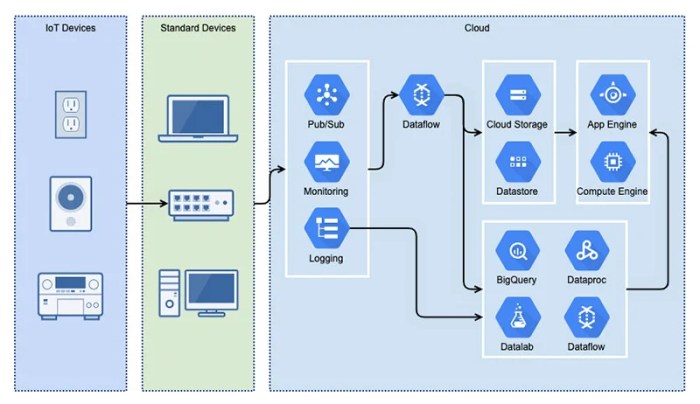
Creating and maintaining cloud architecture diagrams pose unique challenges for organizations. These diagrams are complex representations of cloud environments, encompassing various components, connections, and dependencies. Keeping these diagrams accurate and up-to-date can be a daunting task, especially in dynamic and rapidly evolving cloud environments.
Effective Communication and Collaboration
One of the primary challenges lies in ensuring effective communication and collaboration among stakeholders involved in the development and maintenance of cloud architecture diagrams. These stakeholders may include architects, engineers, developers, and business leaders, each with varying levels of technical expertise and perspectives.
Miscommunication or lack of clarity can lead to inaccurate or outdated diagrams, hindering their usefulness.
Tips for Overcoming Challenges
To overcome these challenges, organizations can adopt several best practices:
- Establish Clear Objectives: Clearly define the purpose and scope of the cloud architecture diagrams. This helps stakeholders understand the intended use and ensures consistency in the level of detail and representation.
- Use Standardized Symbols and Conventions: Adopt industry-standard symbols, notations, and conventions for representing cloud components and their relationships. This enhances the clarity and readability of the diagrams, facilitating easy understanding by stakeholders with diverse backgrounds.
- Maintain a Centralized Repository: Create a centralized repository or platform for storing and managing cloud architecture diagrams. This ensures that all stakeholders have access to the latest and most accurate versions of the diagrams, minimizing the risk of outdated or inconsistent information.
- Implement Version Control: Implement version control systems to track changes and maintain a history of the diagrams. This allows stakeholders to revert to previous versions if necessary and facilitates collaboration by allowing multiple users to work on the diagrams simultaneously.
- Regularly Review and Update Diagrams: Regularly review and update the cloud architecture diagrams to reflect changes in the cloud environment, such as new deployments, migrations, or decommissioning of services. This ensures that the diagrams remain accurate and useful for decision-making and planning.
Emerging Trends in Cloud Architecture Diagrams
Cloud architecture diagrams are continuously evolving to keep pace with the rapidly changing landscape of cloud computing. Emerging trends in this field include the integration of artificial intelligence (AI) and machine learning (ML) to automate and optimize cloud architectures, the adoption of microservices and serverless architectures for greater agility and scalability, and the use of containers and Kubernetes for efficient resource utilization and portability.
AI and ML in Cloud Architecture Diagrams
AI and ML are transforming the way cloud architecture diagrams are created and managed. These technologies can automate tasks such as resource provisioning, performance monitoring, and security analysis, enabling architects to focus on higher-level design and strategic planning. Additionally, AI and ML can be used to analyze usage patterns and identify opportunities for optimization, helping organizations improve the efficiency and cost-effectiveness of their cloud environments.
Microservices and Serverless Architectures
Microservices and serverless architectures are gaining popularity due to their ability to improve flexibility and scalability in cloud environments. Microservices decompose applications into small, independent services that can be developed, deployed, and scaled independently. This modular approach enables organizations to respond quickly to changing business needs and market demands.
Serverless architectures take this concept a step further by eliminating the need for organizations to manage servers or infrastructure, allowing them to focus solely on developing and deploying their applications.
Containers and Kubernetes
Containers and Kubernetes are key technologies that enable organizations to achieve portability, scalability, and agility in their cloud environments. Containers package applications and their dependencies into isolated units that can be easily deployed and managed across different environments. Kubernetes is a container orchestration platform that automates the deployment, scaling, and management of containerized applications, providing a consistent and reliable platform for running cloud-native applications.
Final Thoughts
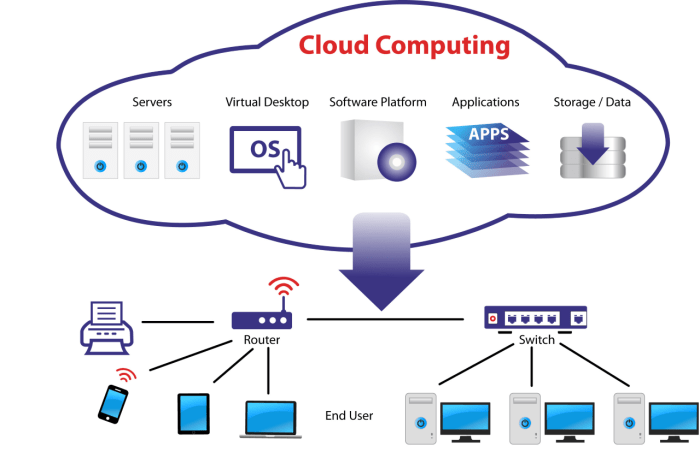
In essence, cloud architecture diagrams are indispensable assets in the pursuit of flexibility and agility in cloud environments. Their ability to visualize complex architectures, identify potential bottlenecks, and facilitate effective communication among stakeholders makes them invaluable tools for organizations navigating the ever-changing IT landscape.
